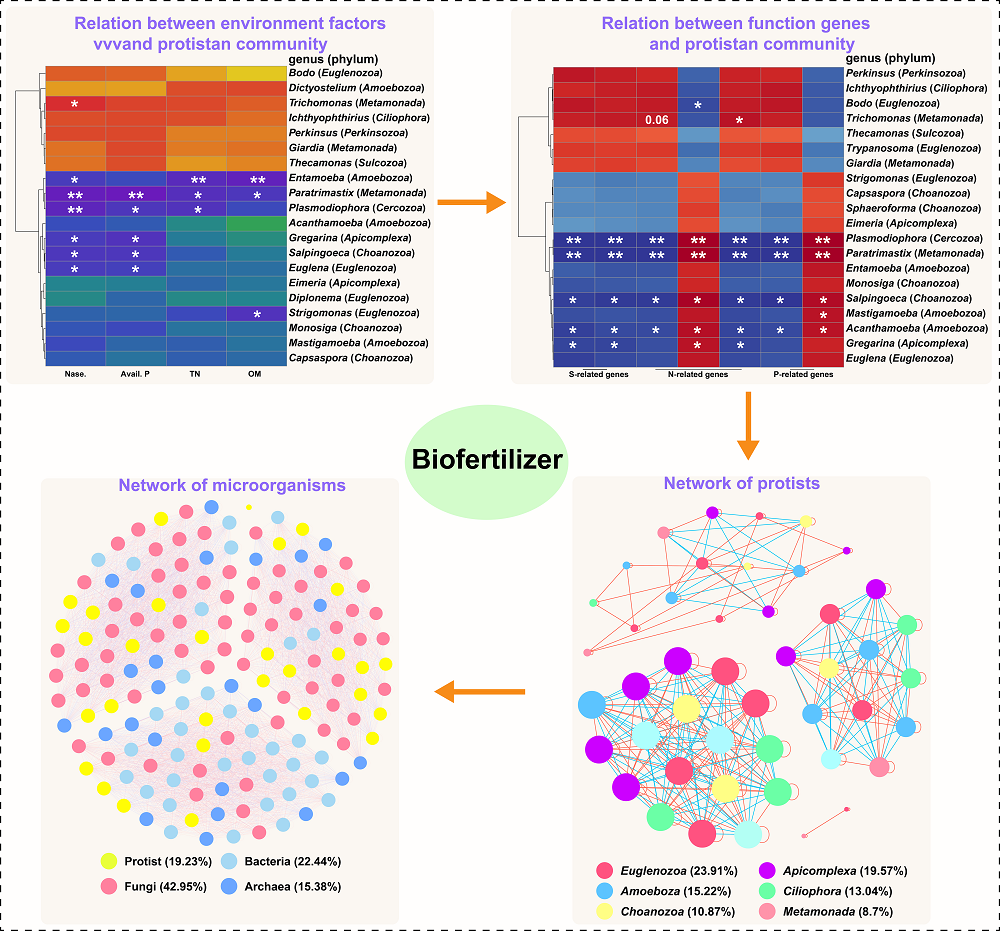Biofertilizer, an environment-friendly and renewable plant nutrient source, has been widely applied and studied to reduce dependency on chemical fertilizers. However, most studies focus on the effects of biofertilizer on the bacterial and fungal communities, and we still lack an understanding of biofertilizer on the protistan community. Here, the effects of biofertilizer application on the composition and interaction of the protistan community in the wheat rhizosphere were investigated based on a 4-year field experiment. Biofertilizer application altered soil physicochemical properties and the protistan community composition (ANOSIM, p < 0.001), and significantly induced an alpha diversity decline. Random forecast and redundancy analysis demonstrated that nitrogenase activity and available phosphorus were the main drivers. Trichomonas classified to the phylum Metamonada was enriched by biofertilizer, and was significantly positive connections with soil nitrogenase activity and some function genes involved in nitrogen-fixation and nitrogen-dissimilation. Biofertilization loosely connected biotic interactions, while did not affect the stability of the protistan community. Besides, biofertilizer promoted the connections of protists with fungi, bacteria, and archaea. Combined with the conjunct biotic network (protist, fungi, bacteria, and archaea) and interactions between protists and soil physicochemical properties/function genes, protists may act as keystone taxa potentially driving soil microbiome composition and function.

